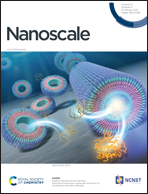Enhancing therapeutic effects and in vivo tracking of adipose tissue-derived mesenchymal stem cells for liver injury using bioorthogonal click chemistry†
Abstract
Adipose tissue-derived mesenchymal stem cell (ADSC)-based therapy is attractive for liver diseases, but the long-term therapeutic outcome is still far from satisfaction due to the low hepatic engraftment efficiency of ADSC transplantation. Herein, we propose a strategy based on liver sinusoidal endothelial cell (LSEC)-targeting peptide modification and near infrared (NIR) fluorescent probe labeling for enhancing LSEC-barrier-migration ability and in vivo tracking of ADSCs in a liver injury mouse model. RLTRKRGLK (RK), a LSEC-targeted peptide, and indocyanine green (ICG), a FDA approved infrared fluorescent dye, were simultaneously modified on the ADSC surface via a bioorthogonal click reaction. The equipped ADSCs not only exhibited significant binding ability towards LSEC both in vitro and in vivo, but could also be monitored by NIR imaging in vivo. In particular, the RK-modified ADSCs showed remarkable higher hepatic accumulation as compared to unmodified ADSCs, resulting in better therapeutic outcomes. Therefore, this study provides a simple and convenient method for enhancing the homing of transplanted ADSCs to injured liver accompanying with in vivo cell tracking ability, which may shed light on accelerating the clinical translation of the ADSC-based therapy for liver diseases.



 Please wait while we load your content...
Please wait while we load your content...